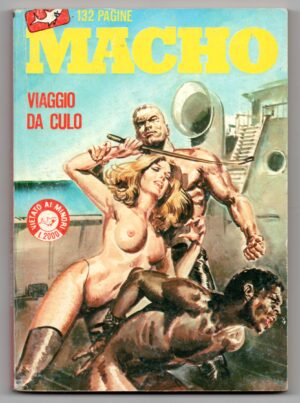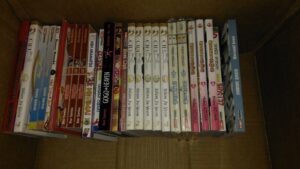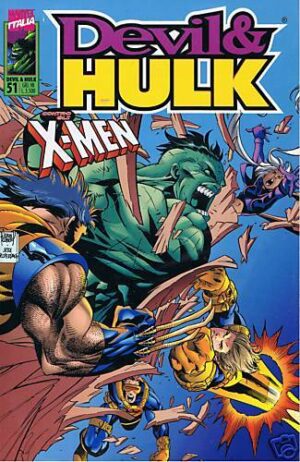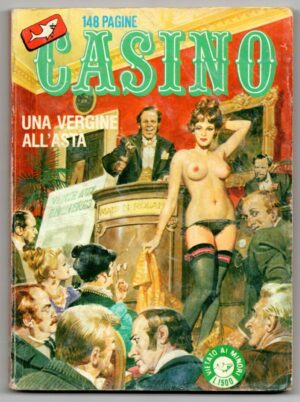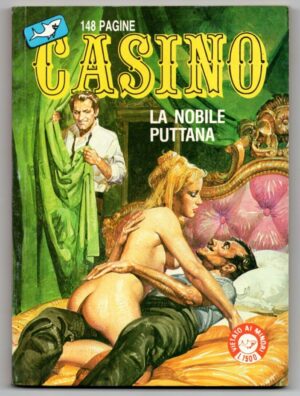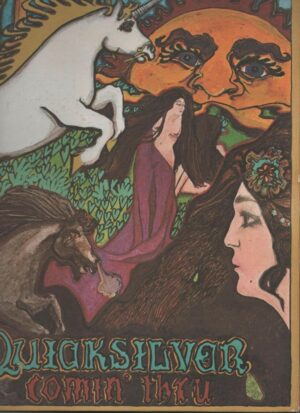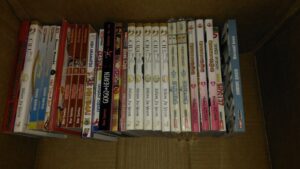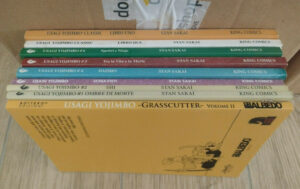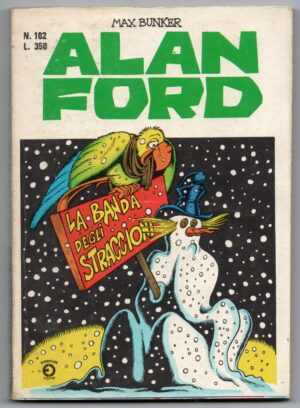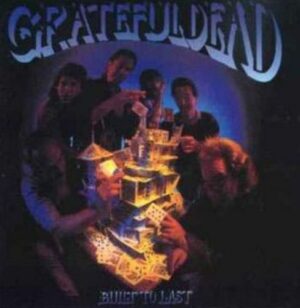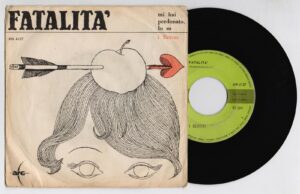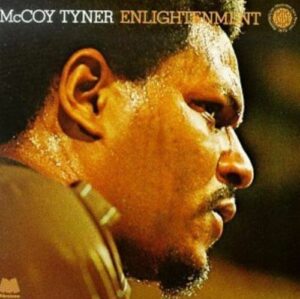Description
PREMESSA: LA SUPERIORITA’ DELLA MUSICA SU VINILE E’ ANCOR OGGI SANCITA, NOTORIA ED EVIDENTE. NON TANTO DA UN PUNTO DI VISTA DI RESA, QUALITA’ E PULIZIA DEL SUONO, TANTOMENO DA QUELLO DEL RIMPIANTO RETROSPETTIVO E NOSTALGICO , MA SOPRATTUTTO DA QUELLO PIU’ PALPABILE ED INOPPUGNABILE DELL’ ESSENZA, DELL’ ANIMA E DELLA SUBLIMAZIONE CREATIVA. IL DISCO IN VINILE HA PULSAZIONE ARTISTICA, PASSIONE ARMONICA E SPLENDORE GRAFICO , E’ PIACEVOLE DA OSSERVARE E DA TENERE IN MANO, RISPLENDE, PROFUMA E VIBRA DI VITA, DI EMOZIONE E DI SENSIBILITA’. E’ TUTTO QUELLO CHE NON E’ E NON POTRA’ MAI ESSERE IL CD, CHE AL CONTRARIO E’ SOLO UN OGGETTO MERAMENTE COMMERCIALE, POVERO, ARIDO, CINICO, STERILE ED ORWELLIANO, UNA DEGENERAZIONE INDUSTRIALE SCHIZOFRENICA E NECROFILA, LA DESOLANTE SOLUZIONE FINALE DELL’ AVIDITA’ DEL MERCATO E DELL’ ARROGANZA DEI DISCOGRAFICI .
BOB DYLAN
another side of Bob Dylan

Disco LP 33 giri , CBS , CBS 32034 , 1964, this is mid 80’s reissue, holland
ECCELLENTI CONDIZIONI, vinyl ex++/NM , cover ex++/NM
Another Side of Bob Dylan è il titolo del quarto album ufficiale della discografia di Bob Dylan.
Prodotto da Tom Wilson, fu pubblicato nel 1964 e vide per la prima volta il compositore e cantante di Duluth cantare accompagnandosi in alcuni brani al pianoforte.

Another Side of Bob Dylan is the fourth studio album by American singer-songwriter Bob Dylan. It was released August 8, 1964 by Columbia Records.
The album deviates from the more socially conscious style which Dylan had developed with his previous LP, The Times They Are A-Changin’. The change prompted criticism from some influential figures in the folk community – Sing Out! editor Irwin Silber complained that Dylan had “somehow lost touch with people” and was caught up in “the paraphernalia of fame”.
Despite the album’s thematic shift, Dylan performed the entirety of Another Side of Bob Dylan
as he had previous records – solo. In addition to his usual acoustic
guitar and harmonica, Dylan provides piano on one selection, “Black Crow
Blues”. Another Side of Bob Dylan reached #43 in the US (although it eventually went gold), and peaked at #8 on the UK charts in 1965.

Etichetta: Cbs
Catalogo: CBS 32034
Data di pubblicazione: 1985
Matrici: B S-62429-1 01-62429-1A1 / S-62429-2
- Supporto:vinile 33 giri
- Tipo audio: stereo
- Dimensioni: 30 cm.
- Facciate: 2
- Red orange label, poems on back cover, cbs nice price catalogue inner sleeve

Track listing
All songs written by Bob Dylan.
Side one
- “All I Really Want to Do” – 4:02
- “Black Crow Blues” – 3:12
- “Spanish Harlem Incident” – 2:22
- “Chimes of Freedom” – 7:09
- “I Shall Be Free No. 10” – 4:45
- “To Ramona” – 3:50
Side two
- “Motorpsycho Nitemare” – 4:31
- “My Back Pages” – 4:20
- “I Don’t Believe You” – 4:20
- “Ballad in Plain D” – 8:15
- “It Ain’t Me Babe” – 3:30

Personnel

Il disco uscì nello stesso anno di The Times They Are A-Changin’, ed è successivo alle prime opere giovanili di Dylan, l’album del debutto che porta il suo nome (Bob Dylan, del 1962) e The Freewheelin’ Bob Dylan, del 1963.
Alla base di questo disco – anch’esso composto da brani tutti
esclusivamente scritti dal cantante – c’è, secondo la ricostruzione
fatta dai cultori del fenomeno Dylan, un suo lungo viaggio giovanile in automobile, stile on the road, attraverso gli Stati Uniti d’America.
Il pretesto sarebbe stato fornito da una serie di concerti: in realtà
Dylan intendeva conoscere e vedere con i propri occhi (per carpirne gli
umori) l’America del suo tempo, quella per la quale avrebbe poi scritto
molte canzoni. Partito da New York arriverà, attraverso quel viaggio, fino in California.
Ed è sulla costa occidentale degli USA che inizia probabilmente l’attrazione di Dylan verso la musica dei Beatles, da poco in auge: le radio passavano in continuazione i singoli dei quattro di Liverpool: da questa attrazione nascerà un mutuo scambio di idee musicali fra il menestrello e, in particolare, il chitarrista dei Beatles John Lennon; una sorta di sodalizio non dichiarato destinato a segnare la musica rock degli anni sessanta.
Secondo alcuni, nacque durante questo viaggio l’idea di Mr. Tambourine Man, canzone poi ripresa dai Byrds, decisamente il brano più significativo ed importante del successivo album, Bringing It All Back Home, pubblicato nel 1965. Gli stessi Byrds avrebbero restituito in forma folk–rock anche due brani contenuti nell’album Another Side: All I Really Want to Do e Chimes of Freedom.
Tornato a New York, Dylan vede la rottura della sua relazione sentimentale con Suze Rotolo (che rievocherà a suo modo nella lunghissima, oltre otto minuti di durata, Ballad In Plain D). Questo influirà sulla vena poetica dell’intero disco.
Per sostenere il lancio del precedente album – The Freewheelin’ Bob Dylan – il cantante si era recato intanto, poco tempo prima, in Inghilterra per il suo primo vero tour internazionale.
Dopo la parentesi in Gran Bretagna, si concesse una vacanza europea che prevedeva, dopo Parigi e Berlino, tappe in Grecia (dove sarebbero stati composti i brani Chimes Of Freedom e It Ain’t Me Babe). Tornato negli Stati Uniti, Dylan si chiuse in studio per incidere i brani di Another Side Of Bob Dylan (nome scelto dal produttore Tom Wilson).
Il disco è composto da motivi liricamente significativi, molti dei quali musicalmente influenzati, con giri di accordi in minore, dalla fine del suo rapporto con Suze. La distinzione tra i brani – tra ballate bluesy
e folk prettamente acustico – è notevole: ad unire il tutto pare
tuttavia fare da sottofondo il ritmo sincopato (quasi spezzato) del rock’n’roll che si mescola con le influenze blues e beat dei nascenti gruppi musicali british, Beatles in testa.
Il titolo dell’album (in lingua italiana traducibile con Un’altra parte di Bob Dylan)
può essere frainteso: in effetti Dylan ha sempre precisato che questa
collezione di canzoni non andava assolutamente considerata né come una
rottura né come una negazione rispetto al passato (evidentemente in
termini non solo musicali ma anche poetici).
Nel retro copertina è presente una lunghissima poesia-poema (o meglio, una raccolta di poesie) dello stesso Dylan intitolata Some other kinds of songs ... (Un altro genere di canzoni ...):
in essa il cantante-poeta ribadisce come [il pubblico] non dovrebbe
contare su di lui per future battaglie sociali; d’altronde, si tratta
appunto di un altro tipo di canzoni quelle che escono da Another Side.
Il testo scritto e non musicato è ricco di citazioni colte e riferimenti a personaggi biblici e non o a situazioni dell’epoca (l’eco della Guerra fredda non si era ancora sopito): fra Michelangelo e Cenerentola, Living Theatre e il profeta Giosuè, scrive ad esempio nel passaggio dedicato a Françoise Hardy (cantante francese in voga all’epoca):
« per françoise hardy
|

E, citando un film italiano di successo, Rocco e i suoi fratelli, aggiunge poco più avanti:
« Rocco e i suoi fratelli
|

Pochi anni dopo (e dopo un misterioso incidente motociclistico) Dylan
si ritirerà dalle scene per diverso tempo rifugiandosi nella pace dei boschi delle colline fuori New York, dove troverà – con il contributo di The Band
(suo gruppo storico) quella che secondo molti critici si rivelerà poi
la formula musicale più brillante della storia del rock, la commistione
tra folk e rock appunto, seconda solo – in termini di impatto sui gusti
giovanili – a quella avuta dalla musica di Elvis Presley.
È da notare, infine, che l’album contiene una canzone, My Back Pages (Le mie pagine passate), ripresa poi dal gruppo californiano dei Byrds e, in anni recenti, in esibizioni live dei Traveling Wilburys in formazione allargata ad Eric Clapton e Neil Young. In sei lunghe e cadenzate strofe, accompagnandosi unicamente con la chitarra, Dylan afferma – poeticamente, ed in maniera curiosa per un giovane (allora) di ventitré anni – di sentirsi giovane più di ieri (Younger than yesterday). Il passato è alle spalle, lascia capire.
Senza considerare che – fra pregiudizi stracciati a metà e sogni di romantici fatti di moschettieri) – sostenere che la vita è bianca e nera è solo una bugia.

Throughout 1963, Dylan worked on a novel and a play. A number of
publishers were interested in signing Dylan to a contract, and at one
point, City Lights
(a small but prestigious company specializing in poetry) was strongly
considered. However, as Dylan worked on his book at a casual pace, his
manager, Albert Grossman, decided to make a deal with a major publisher.
Macmillan’s senior editor, Bob Markel, said, “We gave [Dylan] an
advance for an untitled book of writings…The publisher was taking a
risk on a young, untested potential phenomenon.” When Markel met with
Dylan for the first time, “there was no book at the time…The material
at that point was hazy, sketchy. The poetry editor called it
‘inaccessible.’ The symbolism was not easily understood, but on the
other hand it was earthy, filled with obscure but marvelous imagery…I
felt it had a lot of value and was very different from Dylan’s output
till then. [But] it was not a book.”
It would be years before Dylan finished his book, but the free form
poetry experiments that came from it eventually influenced his
songwriting. The most notable example came in a six-line coda to a poem
responding to President John F. Kennedy‘s assassination (which took place on November 22, 1963):
the colors of Friday were dull / as cathedral bells were gently
burnin / strikin for the gentle / strikin for the kind / strikin for the
crippled ones / an strikin for the blind
This refrain would soon appear in a very important composition,
“Chimes of Freedom”, and, as biographer Clinton Heylin writes, “with
this sad refrain, Dylan would pass from topical troubadour to poet of
the road.”
In February 1964, Dylan embarked on a twenty-day trip across the
United States. Riding in a station wagon with a few friends (Paul
Clayton, Victor Maymudes, and Pete Karman), Dylan began the trip in New
York, taking numerous detours through many states before ending the trip
in California. (At one point, Dylan reportedly paid a visit to poet Carl Sandburg.) “We talked to people in bars, miners,” Dylan would later say. “Talking to people – that’s where it’s at, man.”
According to Heylin, “the primary motivation for this trip was to
find enough inspiration to step beyond the folk-song form, if not in the
bars, or from the miners, then by peering deep into himself.” Dylan
spent much time in the back of the station wagon, working on songs and
possibly poetry on a typewriter. It was during this trip that Dylan
composed “Chimes of Freedom”, finishing it in time to premiere at a
Denver concert on the 15th. “Mr. Tambourine Man” was also composed during this trip.
It was also during this trip that The Beatles
arrived in America. Their first visit to the United States remains a
touchstone in American culture. Maymudes recalled how Dylan “nearly
jumped out the car” when “I Wanna Hold Your Hand” came on the radio and his comments: “Did you hear that?..that was fuckin’ great! Oh man..” and how Dylan seemed lost in thought replaying the record over in his head.
Dylan, however, had already been following The Beatles since 1963.
There have been different accounts regarding Dylan’s attitude towards
The Beatles at this time, but it’s known that Suze Rotolo
and Al Aronowitz immediately took to them and championed their music to
Dylan. Aronowitz later claimed that Dylan dismissed them as
“bubblegum”, but in an interview in 1971, Dylan recalls being impressed
by their music. “We were driving through Colorado, we had the radio on,
and eight of the Top 10 songs were Beatles songs…’I Wanna Hold Your
Hand,’ all those early ones. They were doing things nobody was doing.
Their chords were outrageous, just outrageous, and their harmonies made
it all valid…I knew they were pointing the direction of where music
had to go.”
When Dylan returned to New York in March, he rented an electric
guitar. In January, The Beatles were in France, playing a week’s worth
of concerts. During their stay in France, George Harrison came back to the hotel with an album titled En Roue Libre, better known as The Freewheelin’ Bob Dylan. According to Harrison, “we just played it, just wore it [out]. The content of the song lyrics and just the attitude!” (While The Freewheelin’ Bob Dylan was released in the UK in August 1963, the French edition En Roue Libre was not released until May 1965 so it was likely the UK release).
As The Beatles began to influence Dylan and vice versa, Dylan’s
personal life was undergoing a number of significant changes. Though
their stage appearances together began to dwindle, Dylan continued his
romance with folksinger Joan Baez.
Dylan’s girlfriend Suze Rotolo apparently had had enough of the affair.
Soon after Dylan returned to New York, the two had an argument. At the
time, Suze was staying with her sister Carla, and when Carla intervened,
Dylan began screaming at Carla. Carla ordered Dylan to leave, but he
refused to go. Carla Rotolo pushed Dylan, and he pushed her back. The
two of them were soon practically fighting. Friends were called and
Dylan had to be forcibly removed, effectively ending his relationship
with Suze Rotolo.
In a 1966 interview, Dylan admitted that after their relationship
ended, “I got very, very strung out for a while. I mean, really, very
strung out.”
One account of Dylan’s first experience with hallucinogens places it
in April 1964; producer Paul Rothchild told Bob Spitz that he was
present when Dylan took his first hit of LSD. By February 1964, Dylan was already telling his friends that “Rimbaud‘s
where it’s at. That’s the kind of stuff means something. That’s the
kind of writing I’m gonna do.” A legendary poet, Rimbaud once wrote to
his mentor Georges Izambard
that “the poet makes himself a seer by a long, prodigious and rational
disordering of the senses…He reaches [for] the unknown and even if,
crazed, he ends up by losing the understanding of his visions, at least
he has seen them.” (Dated May 1871) Dylan’s early experimentation with
hallucinogens has often been connected with the dramatic development his
songwriting would soon take, but Dylan himself has denied any
connection.
Dylan later left for Europe, completing a few performances in England
before traveling to Paris where he was introduced to a German model,
Christa Paffgen, who went by the name of Nico.
After treating Dylan to a meal at her flat, Nico accompanied Dylan
across Europe, a trip that passed through Germany before ending in
Vernilya, a small village outside of Athens,
Greece. Dylan stayed at Vernilya for more than a week, finishing many
of the songs that would appear on his fourth and upcoming album. Nine
songs of these would be recorded upon his return to New York: “All I
Really Want to Do”, “Spanish Harlem Incident”, “To Ramona”, “I Shall Be
Free No. 10”, “Ballad in Plain D”, “It Ain’t Me, Babe”, “Mama You Been
On My Mind”, “Denise Denise”, and “Black Crow Blues.” Dylan also completed another song called “I’ll Keep It With Mine“,
which, according to Nico, was “about me and my little baby”. Dylan gave
the song to Nico, who would eventually record it for her own album, Chelsea Girl, released in 1967.
Recording Sessions
With Dylan’s commercial profile on the rise, Columbia was now urging
Dylan to release a steady stream of recordings. Upon Dylan’s return to
New York, studio time was quickly scheduled, with Tom Wilson back as producer.
The first (and only) session was held on June 9 at Columbia’s Studio A
in New York. According to Heylin, “while polishing off a couple of
bottles of Beaujolais“,
Dylan recorded fourteen original compositions that night, eleven of
which were chosen for the final album. The three that were ultimately
rejected were “Denise Denise”, “Mr. Tambourine Man“, and “Mama You Been On My Mind”.
Ramblin’ Jack Elliott
was present during part of this session, and Dylan asked him to perform
on “Mr. Tambourine Man”. “He invited me to sing on it with him,”
recalls Elliott, “but I didn’t know the words ‘cept for the chorus, so I
just harmonized with him on the chorus.” Only one complete take was
recorded, with Dylan stumbling on some of the lyrics. Though the recording was ultimately rejected, Dylan would return to the song for his next album.
By the time Dylan recorded what was ultimately the master take of “My
Back Pages”, it was 1:30 in the morning. Master takes were selected,
and after some minor editing, a final album was soon sequenced.
As Dylan told Nat Hentoff in The New Yorker, “there aren’t any finger-pointin’ songs” on Another Side of Bob Dylan, which was a significant step in a new direction.
“As a set, the songs constitute a decisive act of noncommitment to
issue-bound protest, to tradition-bound folk music and the possessive
bonds of its audience,” writes NPR‘s
Tim Riley. “The love songs open up into indeterminate statements about
the emotional orbits lovers take, and the topical themes pass over
artificial moral boundaries and leap into wide-ranging social
observation.”
“Chimes of Freedom” can be traced to “Lay Down Your Weary Tune“, an outtake from The Times They Are A-Changin’.
“Its sense of the power of nature…closely mirrors ‘Lay Down Your
Weary Tune,'” writes Clinton Heylin. “Unashamedly apocalyptic…the
composition of ‘Chimes of Freedom’ represented a leap in form that
permitted even more intensely poetic songs to burst forth.”
“The compassion that laces all the complaints in ‘All I Really Want
to Do’ and ‘It Ain’t Me, Babe’ is round with idealism and humor,” writes
Riley. “That [both songs] work off a pure Jimmie Rodgers
yodel only makes their ties to wide-open American optimism that much
more enticing (even though they are both essentially reluctant
good-byes).”
“It Ain’t Me, Babe” also reworks the same “Scarborough Fair” arrangement that was written into Dylan’s earlier compositions, “Girl from the North Country” and “Boots of Spanish Leather.” Johnny Cash would record his own hit version of this song soon after Another Side of Bob Dylan was released, while The Turtles‘ version would chart even higher.
Riley describes “My Back Pages” as “a thorough X-ray of Dylan’s former social proselytizing…Dylan renounces his former over-serious messianic perch, and disowns false insights.” (“I was so much older then / I’m younger than that now.”)
According to Heylin, “Ballad in Plain D” takes its melody and refrain (“my friends say unto me…”) from the Scottish folk song, “I Once Loved A Lass (The False Bride)”.
“The song graphically details the night of his breakup with Suze,”
writes Heylin. “Dylan’s portrayal of Carla as the ‘parasite sister’
remains a cruel and inaccurate portrait of a woman who had started out
as one of [Dylan’s] biggest fans, and changed only as she came to see
the degrees of emotional blackmail
he subjected her younger sister to.” Asked in 1985 if there were any
songs he regretted writing, Dylan singled out “Ballad in Plain D”,
saying “I look back at that particular one and say…maybe I could have
left that alone.”
“‘Spanish Harlem Incident‘
is a new romance that pretends to be short and sweet,” writes Riley,
“but it’s an example of how Dylan begins using uncommon word couplings
to evoke the mysteries of intimacy…her ‘rattling drums’ play off his
‘restless palms’; her ‘pearly eyes’ and ‘flashing diamond teeth’ off his
‘pale face.'”
Described by Heylin as “the most realized song on Another Side“,
“To Ramona” is one of the most celebrated songs on the album. A soft,
tender waltz, Riley writes that the song “extends the romance from
ideals of emotional honesty out into issues of conditioned conformity
(‘From fixtures and forces and friends / That you gotta be just like
them’)…in ‘Spanish Harlem Incident,’ [Dylan’s] using flattery as a
front for the singer’s own weak self-image; in ‘To Ramona,’ he’s trying
to save his lover from herself if only because he knows he may soon need
the same comfort he’s giving her.”
Described by Riley as “the unalloyed sting of a romantic perfidy”,
“I Don’t Believe You (She Acts Like We Never Have Met)” would be
dramatically rearranged for a full-electric rock band during Dylan’s
famous 1966 tour with The Hawks.
Four songs from Another Side of Bob Dylan were eventually recorded by The Byrds:
“Chimes of Freedom”, “My Back Pages”, “Spanish Harlem Incident”, and
“All I Really Want to Do”. In addition, they were introduced to their
breakthrough hit single “Mr. Tamborine Man” through a copy of Dylan’s
unreleased recording from the June 9, 1964 album session. All received
their share of critical acclaim.
Outtakes
A complete take of “Mama, You Been On My Mind” was recorded for the
album, but for reasons unknown, it was rejected. Described by Tim Riley
as “the echo of a left-behind affair that rebounds off a couple of
self-aware curves (‘I am not askin’ you to say words like ‘yes’ or ‘no,’
/ …I’m just breathin’ to myself, pretendin’ not that I don’t know),”
the song was soon covered by Joan Baez, who had a considerable amount of commercial success with it. Dylan’s version would not see released until The Bootleg Series Volumes 1-3 (Rare & Unreleased) 1961-1991 in 1991. However, Dylan would periodically perform the song in concert, occasionally with Baez as his duet partner. Rod Stewart would later cover the song for his critically acclaimed album, Never a Dull Moment, and a version by Jeff Buckley appears as an out-take on the 2004 re-issue of Grace. Johnny Cash covered the song on his album Orange Blossom Special. It was covered by Linda Ronstadt on her 1969 album Hand Sown … Home Grown with altered lyrics as “Baby, You’ve Been On My Mind”. The Israeli musician Shlomi Shaban recorded a version of this song translated into Hebrew, which appeared on his 2007 album Ir (עיר, City). Keren Ann covered this song on her “101” tour in 2011 (following the advice of Sahban, her friend).
Though “Mr. Tambourine Man” would be re-recorded for Dylan’s next album, Sony released the complete take recorded for Another Side of Bob Dylan on The Bootleg Series Vol. 7: No Direction Home: The Soundtrack in 2005. Unlike the familiar version recorded for Bringing It All Back Home, this early version has a harmonica intro as well as Ramblin’ Jack Elliott
singing harmony vocals on the chorus. It was an acetate copy of this
version of the song that found its way to the newly formed Byrds in late 1964, leading to their breakthrough electrified recording of the song in advance of its first release by Dylan.
Dylan also recorded two additional songs that did not make the album.
The first is “Denise”, a song which uses the same music as “Black Crow
Blues” but with different lyrics. The second is “California”, which
again uses “Black Crow Blues”‘s music as the basic structure of the
song. A small section of the “California” lyrics were reused in “Outlaw
Blues”, a song that appeared on Dylan’s next album, Bringing It All Back Home. Both outtakes are circulating.
Aftermath
As Another Side of Bob Dylan was prepared for release, Dylan premiered his new songs at the Newport Folk Festival in July 1964. The festival also marked Dylan’s first meeting with country legend Johnny Cash; Dylan was already an admirer of Cash’s music, and vice versa. The two spent a night jamming together in Joan Baez‘s
room at the Viking Motor Inn. According to Cash, “we were so happy to
[finally] meet each other that we were jumping on the beds like kids.”
The next day, Cash would perform Dylan’s “Don’t Think Twice, It’s All
Right” as part of his set, telling the audience that “we’ve been doing
it on our shows all over the country, trying to tell the folks about
Bob, that we think he’s the best songwriter of the age since Pete
Seeger…Sure do.”
Though the audience at Newport seemed to enjoy Dylan’s new material, the folk press did not. Irwin Silber of Sing Out
and David Horowitz criticized Dylan’s direction and accused Dylan of
succumbing to the pressures/temptations of fame. In an open letter to
Dylan published in the November issue of Sing Out, Silber wrote
“your new songs seem to be all inner-directed now, inner-probing,
self-conscious” and, based on what he saw at Newport, “that some of the
paraphernalia of fame [was] getting in your way.” Horowitz called the
songs an “unqualified failure of taste and self-critical awareness.”
The album was a step back commercially, failing to make the Top 40,
indicating that record consumers may have had a problem as well.
Dylan would soon defend his work, writing that “the songs are
insanely honest, not meanin t twist any heads an written only for the
reason that i myself me alone wanted and needed t write them.”
Dylan would concede in 1978 that the album title was not to his
liking. “I thought it was just too corny,” he said, “I just felt trouble
coming when they titled it that.” However, it’s worth noting that the
original manuscripts to the album make two references to the eventual
album title: an early draft of “I Shall Be Free No. 10” has the line
“You’re on another side” while the only line occupying one final page
says “there is no other side of bob dylan.”
Legacy
Years later, mixed reactions over Another Side of Bob Dylan
would remain but not for the same reasons. Critics would later view it
as a ‘transitional’ album. Clinton Heylin would claim that “Dylan was
simply too close to the experiences he was drawing upon to translate
them into art. He was also still experimenting with the imagery found on
‘Chimes of Freedom’ and ‘Mr. Tambourine Man.’ ‘My Back Pages,’ the
least successful example of the new style, was replete with bizarre
compound images (‘corpse evangelists,’ ‘confusion boats,’ etc.).” Salon.com
critic Bill Wyman would dismiss it as “a lesser, ‘relationship’ album”,
but conceded that “Chimes of Freedom” was a “lovely hymn to the
‘countless confused, accused, misused, strung-out ones an’ worse’.”
However, NPR‘s
Tim Riley would call it “a bridge between folkie rhetoric (albeit
superior) and his troika of electric rants…a rock album without
electric guitars, a folk archetype that punches through the hardy,
plainspoken mold. Built on repeated riffs and coaxed by the controlled
anxiety of Dylan’s voice, the songs work off one another with
intellectually charged élan. It’s a transition album with a mind of its
own.”

The other side of Bob Dylan
referred to in the title is presumably his romantic, absurdist, and
whimsical one — anything that wasn’t featured on the staunchly folky,
protest-heavy Times They Are a-Changin’, really. Because of this, Another Side of Bob Dylan is a more varied record and it’s more successful, too, since it captures Dylan
expanding his music, turning in imaginative, poetic performances on
love songs and protest tunes alike. This has an equal number of classics
to its predecessor, actually, with “All I Really Want to Do,” “Chimes
of Freedom,” “My Back Pages,” “I Don’t’ Believe You,” and “It Ain’t Me
Babe” standing among his standards, but the key to the record’s success
is the album tracks, which are graceful, poetic, and layered. Both the
lyrics and music have gotten deeper and Dylan‘s
trying more things — this, in its construction and attitude, is hardly
strictly folk, as it encompasses far more than that. The result is one
of his very best records, a lovely intimate affair.
rk, NY


